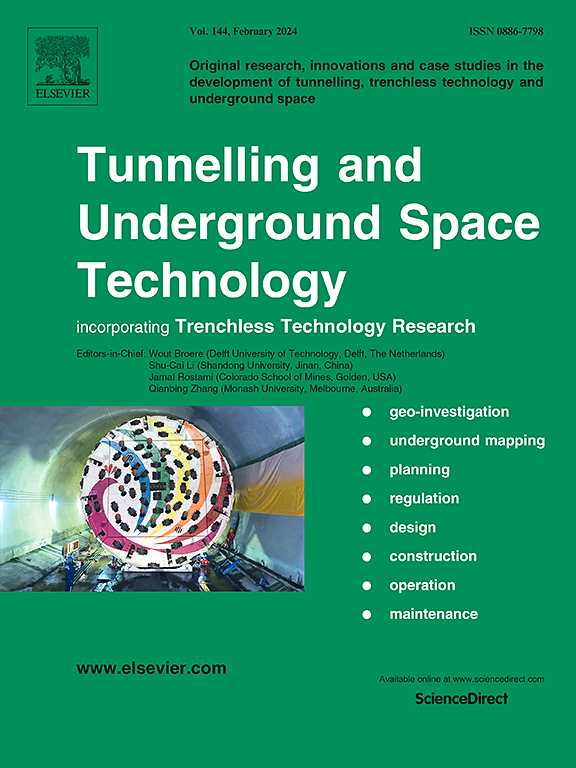The role of locking segments on an earthquake-resistant segmented ductile iron water pipeline joint behavior under tension and bending
IF 6.7
1区 工程技术
Q1 CONSTRUCTION & BUILDING TECHNOLOGY
引用次数: 0
Abstract
Ground displacements by fault movements or landslides can cause significant damage and failure of buried water pipelines. This is particularly concerning for urban water distribution networks with segmented water pipelines connected by vulnerable joints. The objective of this study is to assess the deformation and failure mechanism of a ‘restrained’ axial joint integrated into a segmented ductile iron pipeline to enable it to tolerate significant ground movements. This joint type employs locking segments to restrain the relative axial movements of the two pipe sections after some free movement. The hypothesis of this study is that the joint structure and locking segment orientation influence the joint’s performance. A series of full-scale axial and bending tests were conducted on an 8-inch (203-mm) diameter jointed ductile iron pipeline with various orientations of the locking segments at the joint. Distributed fiber optic sensor (DFOS) was utilized to capture the development of spatially continuous strain profiles of the joint section and the pipes with increasing loads. Three-dimensional (3D) finite element (FE) models of the jointed pipeline are developed and validated against the DFOS measurements. Combined results from the laboratory tests and FE analyses show that the behavior of joint opening under increasing tension has three stages, depending on the interaction between the spigot and the locking segments. In particular, the axial force builds up significantly when the weld bead starts to engage with the locking segments until it breaks. A crack initiates at the interface between the locking segment and single slot. The joint behavior observed by the four-point bending tests can be also divided into three distinctive stages, and each of them influenced by the orientations of the locking segments in terms of deflection flexibility, capacity, and the initiation deflection points for potential joint failure and water leakage. The effect of the initial positioning of the bell-spigot joint on the joint’s overall bending stiffness is investigated. In addition, a novel joint bushing connector model is proposed as a surrogate model of the continuum contact model of the bell-spigot joint. This bushing connector model is capable of capturing the essential characteristics of the joint while simultaneously mitigating computational time for future modelling of pipeline system in system level.
求助全文
约1分钟内获得全文
求助全文
来源期刊

Tunnelling and Underground Space Technology
工程技术-工程:土木
CiteScore
11.90
自引率
18.80%
发文量
454
审稿时长
10.8 months
期刊介绍:
Tunnelling and Underground Space Technology is an international journal which publishes authoritative articles encompassing the development of innovative uses of underground space and the results of high quality research into improved, more cost-effective techniques for the planning, geo-investigation, design, construction, operation and maintenance of underground and earth-sheltered structures. The journal provides an effective vehicle for the improved worldwide exchange of information on developments in underground technology - and the experience gained from its use - and is strongly committed to publishing papers on the interdisciplinary aspects of creating, planning, and regulating underground space.
 求助内容:
求助内容: 应助结果提醒方式:
应助结果提醒方式:


